Cheating with Magnetic Dice
DIY 3D printed dice with magnet inside
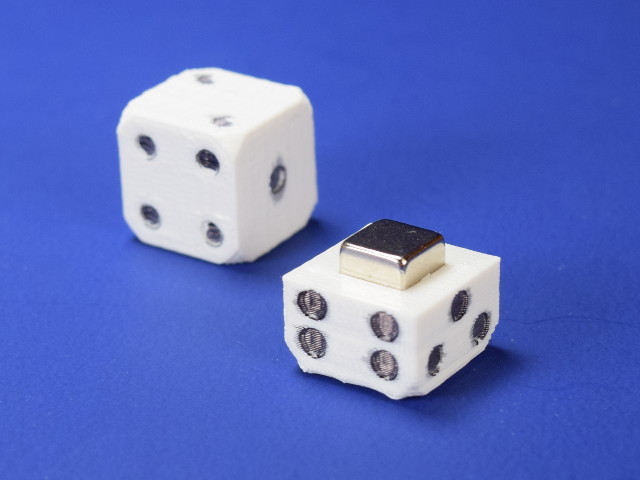
Can magnetic dice really help someone cheat? Is this really a thing? How would that even work?
Though our handiwork isn't slick enough to fool a casino pit boss, a few experiments might help determine if magnetic dice are feasible. Let's cheat with magnetic dice!
The test subjects
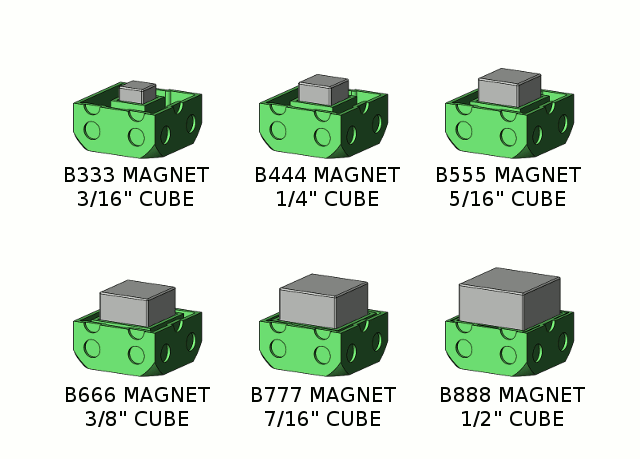
We created six individual dice, each with a different sized magnet inside. We 3D printed the shapes, each with a cavity inside to hold a single cube magnet. With careful timing during the printing process, we inserted the magnet as the die was printed around it.
In each case, we inserted the magnet with the north pole facing the one, and the south pole facing the six. Each die had a subsequently larger magnet inside. The weakest has just a tiny, 3/16" B333 cube inside, whereas the largest is almost filled with the 1/2" B888 cube. Standard dice are sized as a 5/8" cube, so that last one is mostly magnet!
Can a die be a compass?
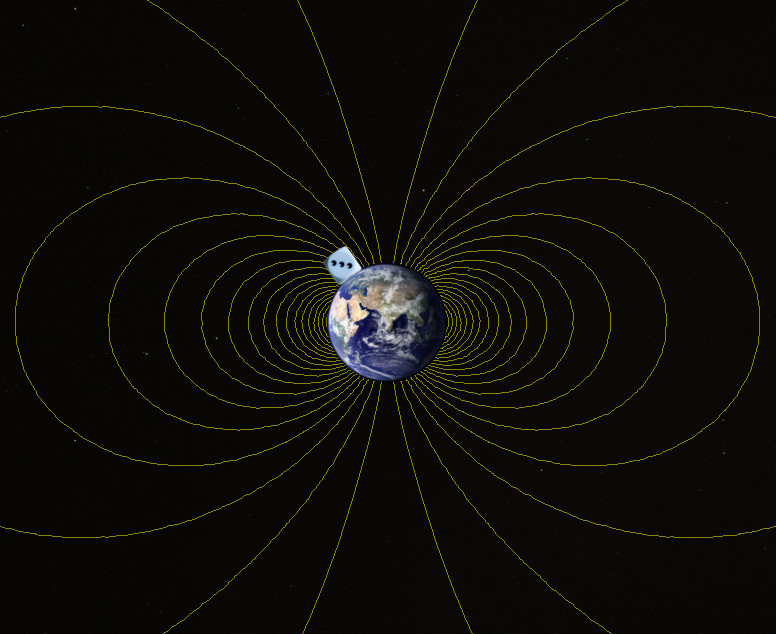
Before getting into anything fancy like a dice table rigged with an electromagnet, a more basic question has been on our minds. Would the magnet's interaction with the earth's magnetic field make one roll more likely than another?
The earth's magnetic field points north, but also downward. Here in Pennsylvania, USA, the magnetic field is about 0.5 gauss, pointing north, but also at a downward angle of over 60 degrees. To learn more about that, see our earlier article, The Earth Is a Magnet.
The force from this magnetic interaction is weak. It's not enough to overcome the random bouncing around of a die, mostly. It's not going to force it to land on a six every time. Sometimes though, if the die is teetering on an edge, might this little magnetic force tip the balance more one way? In the long run, would we roll more sixes?
Roll the dice
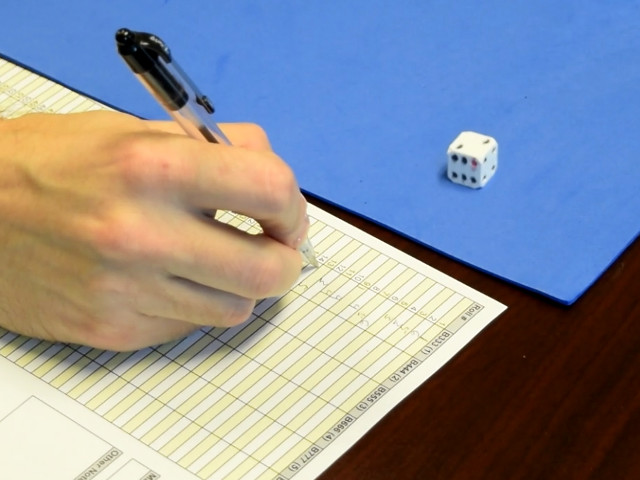
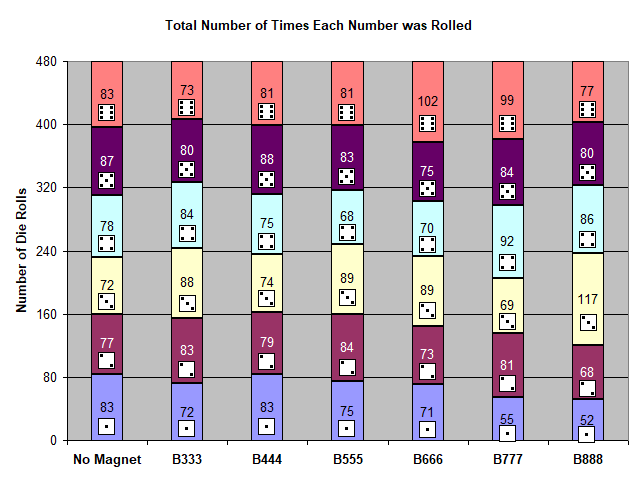
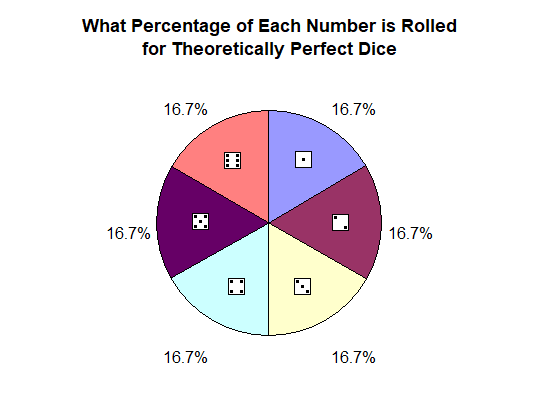
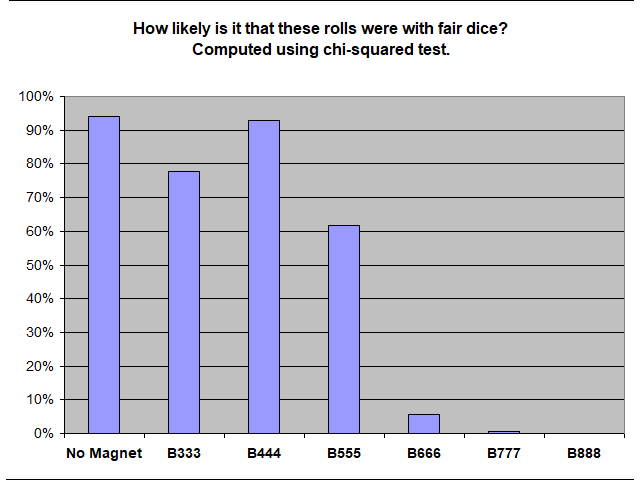
To test the theory, we rolled the dice. A lot. Each die was rolled by multiple people, totaling 480 recorded rolls for each die. Any tendency to roll more towards one number should show up. We guessed that we'd see this effect increase with increased magnet size/strength.
With 480 rolls of each die, we expect each individual number (1-6) to show up about 80 times. We wouldn't expect the result to be exactly 80 rolls of each number, but it should be something fairly close.
The graphs of results show:
- The empty dice look reasonably fair. We computed a 94% chance of those 480 rolls as coming from completely fair dice using the Chi-Squared method. That's pretty good for the rough surface of a 3D printed die!
- The two smallest magnets (3/16" B333 and 1/4" B444) may have affected the results, but aren't conclusively cheating.
- The larger, 5/16" B555 magnet looks fishy. For some unknown reason, a number 3 is a bit more likely than other numbers, with number 4 less likely to come up. This isn't a clear winner as a tool to cheat with, but there's a 1 in 3 chance there's something fishy with those results.
- The 3/8" diameter B666 magnet is the first solid cheating die. This die is much more likely to roll a six, and less likely to roll a one. The Chi-Squared test suggests that you'd only get the rolls we recorded about 5% of the time with fair dice.
- The largest magnets were obvious cheaters. The 7/16" B777 magnet mimicked the B666, with sixes more likely and ones less likely. The B888 had a strange liking for the number 3, with over 45% more threes rolled than expected. We don't know why, but it's definitely not a fair die.
Why was three more likely? We're not sure, but it may have something to do with the 3D printing. All of our dice were printed on the printer's table with the three facing down. Would that affect it somehow? We're not sure.
Weigh the chances
It was a lot of fun making and testing these dice. There's one thing that doesn't show up in the numbers: The weight isn't right. The 3D printed plastic is lighter than regulation dice. The dice with big magnets are much heavier than regulation. If you let someone handle the big-magnet dice, they'll know something is wrong very quickly.
The lightest magnet that gave us predictable results was the B666. This magnet weighs about 6.5g, which is quite a bit more than a regulation die of 4.1g. When you add the printed plastic, it's nearly twice as heavy as normal.
Crooked Tables

With some magnetic dice to play with, it's time to test the elephant in the room. What about a table with an electromagnet underneath? Can the house play unfairly with such a device?
If the dice is at all magnetic, then this has to be feasible. We noticed a difference in the rolls done in Earth's relatively weak 0.5 gauss field. There has to be more influence if we increase the field strength on top of the table. What if the field were 30 times stronger?
That's what we built. This dice table features a 5" diameter coil of 20 gauge wire. We had about 400 ft of wire to play with, which gave us 300 turns. We hooked it up to a 12V power supply, giving us about 0.6 Amps of current through the coil.
We wanted to make the coil twice as large, but ran out of wire!
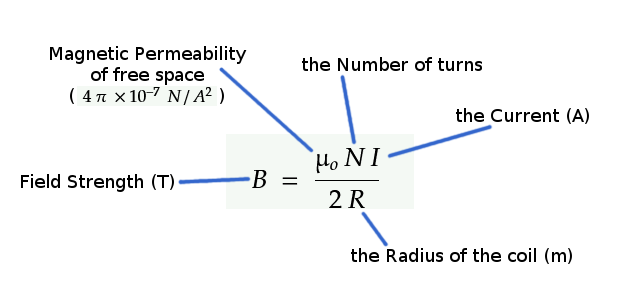
Theoretically, we should see roughly 19 gauss at the center. That's not a perfect theoretical analysis, but gets us in the ballpark. We measured about 15 gauss at the table surface, so close enough.
How effective is 15 gauss? Too much! In the center of the circle, the dice with the four largest magnets won't stay down on any number adjacent to six. Set it down on a 2, 3, 4 or 5, and the dice will jump to display a 6. This is a little too obvious!
It will set down on a one, even if it's unlikely to land on a one during a roll.
This is too strong to leave turned on all the time. Dice that land more often on one number will be easy to spot very quickly. A setup this strong would only be turned on occasionally to fool people, only getting the six for a key roll.
We didn't make it very large, but the coil could just as easily be much larger. It could be made as large as the table! We skipped this step because that would take a lot more wire, which can be expensive. For a proof-of-concept, we worked with materials at hand.
Disclaimer
Please, do not cheat at dice. Don't blame us for getting kicked out of a casino! We don't promote making crooked dice. As always, this exploration was really just an excuse to play with magnets.
If you notice your dice stick to steel, though, somebody might be cheating.
